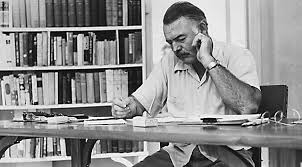In his book In Praise of Shadows (published in 1933), novelist Jun'ichirō Tanizaki, sets forth observations about the aesthetics of traditional Japanese architecture. Foremost in his mind is the vital role of shadows:
There are no doubt all sorts of reasons — climate, building materials — for the deep Japanese eaves. The fact that we did not use glass, concrete, or bricks, for instance, made a low roof necessary to keep off the driving wind and rain. A light room would no doubt have been more convenient for us, too, than a dark room. The quality that we call beauty, however, must always grow from the realities of life, and our ancestors, forced to live in dark rooms, presently came to discover beauty in shadows, ultimately to guide shadows towards beauty’s ends.
And so it has come to be that the beauty of a Japanese room depends on a variation of shadows, heavy shadows against light shadows — it has nothing else. Westerners are amazed at the simplicity of Japanese rooms, perceiving in them nothing more than ashen walls bereft of ornament. Their reaction is understandable, but it betrays a failure to comprehend the mystery of shadows . . .
. . . Of course the Japanese room does have its picture alcove, and in it a hanging scroll and a flower arrangement. But the scroll and the flowers serve not as ornament but rather to give depth to the shadows . . .
In Praise of Shadows, p. 18 - 19
(Translated by Thomas J. Harper and Edward G. Seidensticker)
Note Tanizaki’s focus. While we might be tempted to view the shadows as important only inasmuch as they provide contrast to some featured element, Tanizaki's attention is absorbed by the shadows themselves. (His book is not titled The Usefulness of Shadows.)
Here, he speaks of the Sumiya teahouse in Kyoto. Note how precisely he captures the darkness.
On the far side of the screen, at the edge of the little circle of light, the darkness seemed to fall from the ceiling, lofty, intense, monolithic, the fragile light of the candle unable to pierce its thickness, turned back as from a black wall. I wonder if my readers know the color of that“darkness seen by candlelight.” It was different in quality from darkness on the road at night. It was a repletion, a pregnancy of tiny particles like fine ashes, each particle luminous as a rainbow. I blinked in spite of myself, as though to keep it out of my eyes.
— page 34
Elsewhere he lingers over a related element —grime:
Glassmaking has long been known in the Orient, but the craft never developed as in the West. Great progress has been made, however, in the manufacture of pottery. Surely this has something to do with our national character. We do not dislike everything that shines, but we do prefer a pensive luster to a shallow brilliance, a murky light that, whether in a stone or an artifact, bespeaks a sheen of antiquity.
Of course this “sheen of antiquity” of which we hear so much is in fact the glow of grime. In both Chinese and Japanese the words denoting this glow describe a polish thatcomes of being touched over and over again, a sheen produced by the oils that naturally permeate an object over long years of handling — which is to say grime. If indeed “elegance is frigid,” it can as well be described as filthy. There is not denying, at any rate, that among the elements of the elegance in which we take delight is a measure of the unclean, the unsanitary.
— page 11
In his embrace of these neglected aesthetic elements, Tanizaki finds parallels in literary technique:
One of the oldest and most deeply ingrained of Japanese attitudes to literary style holds that too obvious a structure is a contrivance, that too orderly an exposition falsifies the ruminations of the heart, that the truest representation of the searching mind is just to “follow the brush.” Indeed, it would not be far wrong to say that the narrative technique we call “stream of consciousness” has an ancient history in Japanese letters. It is not that Japanese writers have been ignorant of the powers of concision and articulation. Rather, they have felt that certain subjects — the vicissitudes of the emotions, the fleeting perceptions of the mind — are best couched in a style that conveys something of the uncertainty of the mental process and not just its neatly packaged conclusions.
— page 45
When speaking of craft, experts generally stress the virtues of clarity, probably because the first obstacle facing any artist is being understood. Tanizaki, however, stresses the danger of creating work that pretends all is clear, as in transparent. He seems to insist that we include in our art what we don’t understand, the shadows and smudges of mystery, and that we learn to render our unknowing in all of its strange beauty.
Flaubert was an advocate of clarity, but note how well this observation resonates with Tanizaki:
Ineptitude consists in wanting to reach conclusions . . . What mind worthy of the name, beginning with Homer, ever reached a conclusion?
The Letters of Gustave Flaubert 1830-1857, p. xiii
(Translated by Francis Steegmuller)
And here, Flaubert captures the larger point.
What seems to me the highest and most difficult achievement of Art is not to make us laugh or cry, nor to arouse our lust or rage, but to do what nature does—that is, to set us dreaming.
p. xi
Dreams. Their power to transport and haunt us relies not so much the magic that may unfold within them as much as the sense that some vital element has eluded our understanding. We wake up trying to figure them out. Likewise, the art that calls us back makes use of shadows and other obscuring elements so that the questions eclipse the answers.
























